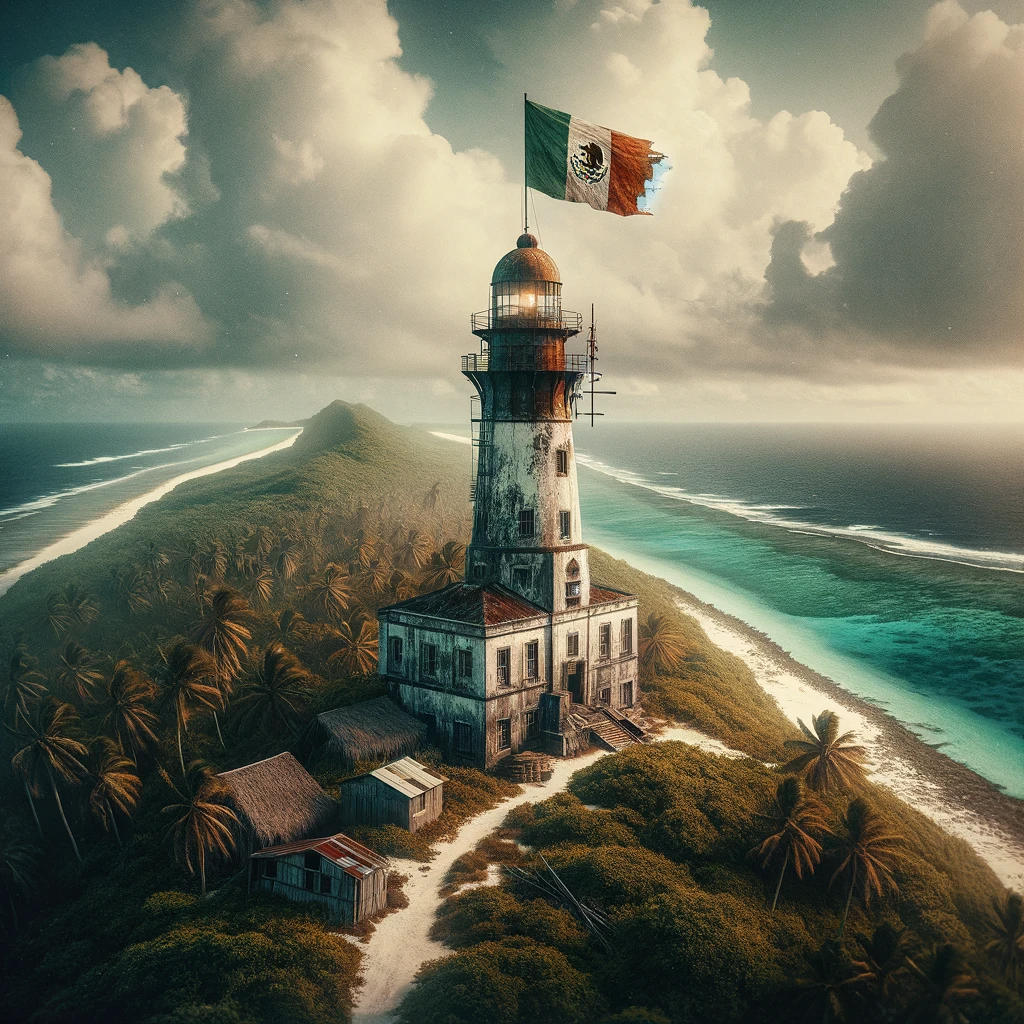Clipperton Island, a remote atoll in the Pacific Ocean, once held a peculiar chapter in the annals of colonial history, involving the Mexican military and an unconventional “kingdom” established by a lighthouse keeper. This small coral atoll, situated over 1,000 kilometers southwest of Mexico, became the stage for an intriguing story of human endurance, geopolitical interest, and tragic isolation, culminating in its abandonment in 1917. The period right before the Mexican Revolution and the reign of the so-called “king” before the island was eventually left to its natural state offers a fascinating glimpse into the human capacity for survival and the often-overlooked corners of colonial history.
Early Mexican Interest in Clipperton
Mexico’s interest in Clipperton Island stemmed from its strategic location and the guano deposits found there, valuable as fertilizer. In the late 19th and early 20th centuries, nations were keen to claim uninhabited lands rich in guano, leading to Mexico establishing a presence on Clipperton in 1897. The Mexican government aimed to exploit the island’s resources and assert its sovereignty over the territory, especially against French claims. A military colony was established to this end, marking the beginning of a significant, though largely forgotten, episode in the island’s history.
The Lighthouse Keeper’s “Kingdom”
The most famous inhabitant of Clipperton Island was Victoriano Álvarez, a lighthouse keeper who, over time, became known as the island’s “king.” Álvarez’s reign began under unusual circumstances. Initially, the Mexican government had stationed a small military garrison on the island, along with a few civilians, to operate the lighthouse and lay claim to the territory. However, as the Mexican Revolution intensified in the early 20th century, the supply ships from Mexico ceased to arrive.
Isolated and cut off from the mainland, the inhabitants of Clipperton faced extreme hardship. Disease and a lack of fresh water and food took a heavy toll, with many of the island’s residents succumbing to scurvy and other illnesses. Over time, almost all the men on the island died, leaving Álvarez as the sole male survivor among a group of women and children.
The Decline and Abandonment
Álvarez’s “reign” was marked by despotism and cruelty, leading to a harrowing existence for the remaining inhabitants. His control over the island ended in violence, and not long after, the survivors were rescued by an American ship in 1917. The story of Clipperton Island’s Mexican colony and its lighthouse keeper “king” came to an end, but it left behind a legacy of human struggle against isolation and adversity.
Aftermath and Legacy
After the rescue in 1917, Clipperton Island was eventually claimed by France, and the Mexican presence on the island came to an end. The brief and tragic history of the Mexican military colony and Álvarez’s reign stands as a testament to the extremes of human behavior in isolation. It also highlights the geopolitical contests of the era, where remote and inhospitable territories were subjects of international rivalry for their strategic and economic value.

Today, Clipperton Island is an uninhabited French overseas territory, primarily of interest to scientists studying its unique ecosystem and the impact of climate change on coral atolls. The island’s history, though largely forgotten, offers valuable insights into the challenges of early 20th-century colonial endeavors and the human capacity for both endurance and tyranny.
